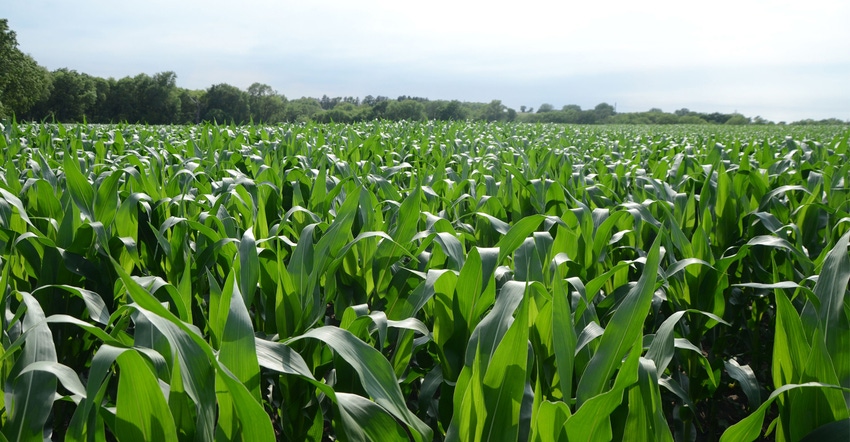
It goes without saying that 2020 has gotten off to a rough start, not unlike 2019. In the middle of the COVID-19 pandemic, and coming off a year riddled with planting and herbicide application disruptions because of extreme weather, Jason Gibson, market development specialist with Corteva Agriscience, advises producers to create a checklist for the 2020 growing season.
"They need to be planning ahead and be prepared to adjust to any kind of weather condition they may not see today but could anticipate," Gibson says. "In 2019, we learned a lot about what it was like to have to adjust and go from Plan A to B and sometimes C."
With that in mind, Gibson offers a few key items to include on farmers' checklists:
Plan out nitrogen applications early. Reach out to your retailer to discuss nitrogen needs, review soil sample results and account for preplant nitrogen applications and strategies for in-season applications.
"We're getting more intense rain events. In those situations, if the soil stays saturated, we can lose a lot of nitrogen due to denitrification, and with heavier rain events, it's easier for nitrogen to move deeper into the soil profile. We're encouraging growers to focus more on using nitrogen stabilizers to minimize both denitrification and leaching," Gibson says, noting Corteva nitrogen stabilizers, N-Serve and Instinct.
After last year's rain events, Gibson encourages rethinking nitrogen application timings.
"There was some assumption we can put part of our N down and take care of the balance in-season," he says. "That's normally a good approach, but we have to prepare for situations where we get a preplant application on and may not be able to apply in-season.
"I prefer to have at least two-thirds of my N down preplant and apply about one-third in-season. That way, if I get caught and can't make an in-season application, the deficit is small enough to be made up some through mineralization."
Weed control. Prioritize preemergence herbicide applications, and don't forget multiple effective modes of action and overlapping residuals.
"With the weather we're dealing with, we have to take a proactive approach and take advantage of early windows to make sure at least some of our acres get herbicide applications, so those fields where we weren't able to apply a pre, we can address those first with an early post application," Gibson says. "If we apply our post application within a 21- to 28-day window of preemergence application, we're controlling a lot more weeds before they even emerge."
Another step, either this fall or next spring, is a fall or early-spring burndown application.
"It helps the crop establish a more uniform stand and early-season vigor than if we let those winter annual weeds get out of control," Gibson says. "When you apply a preemergence herbicide and have a stand of winter annual weeds, that's ultimately disrupting the distribution pattern of that pre you're putting down to control Palmer amaranth and waterhemp. Palmer and waterhemp control behind the pre isn't near as good as if we had applied a fall or early-spring burndown for a clean seedbed."
When stacking multiple modes of action, planting depth becomes more important.
"We need to make sure we're seeding deep enough that the root isn't contacting that herbicide and impacting growth," Gibson says. "I'm encouraging growers to look at a 2-inch planting depth for corn and soybeans. Recent work by the University of Nebraska-Lincoln shows soybeans planted at a 1.75-inch depth are yielding more. You're also putting yourself in a position where the herbicide is less likely to hurt the crop."
Don't ignore disease pressure, both early- and late-season. This includes northern corn leaf blight.
"If we don't get on top of it quickly, it's a little more difficult to control once it's established, and the yield impact is more substantial than gray leaf spot," Gibson says. "I encourage growers to get out there in the early part of June and make sure it isn't showing up early.
"In late July and early August, we're seeing more moderate temperatures and still high humidity levels. We're seeing gray leaf spot become more present later on, and we're losing photosynthetic leaf area, and it's impacting stalk integrity. When we get into early August and have favorable humidity and moderate temperatures, if you haven't made a fungicide application, consider a blister or early milk stage application. Growers doing that are seeing higher yields and greater test weight."
Strobilurin-resistant frogeye leaf spot has been confirmed in soybeans in 10 Nebraska counties.
"So we're encouraging the use of [Corteva's] Aproach Prima [picoxystrobin and cyproconazole] around beginning pod set or R3 to control frogeye leaf spot," Gibson says. "It has two modes of action and will help manage isolates that might be resistant to strobilurin chemistry. Frogeye leaf spot has been more of an afterthought, and a lot of soybeans fields have only had a single mode of action strobilurin fungicide applied. We're going to have to shift that mindset."
"It helps to not only plan for the expected, but plan for the unexpected and make sure some of the larger rocks that would significantly impact yield don't occur," Gibson says. "It's going to be difficult to overcome low commodity prices by simply cutting expenses. It's going to take raising as many bushels as efficiently as possible. That's where those big rocks on our checklist are really important."
About the Author(s)
You May Also Like






